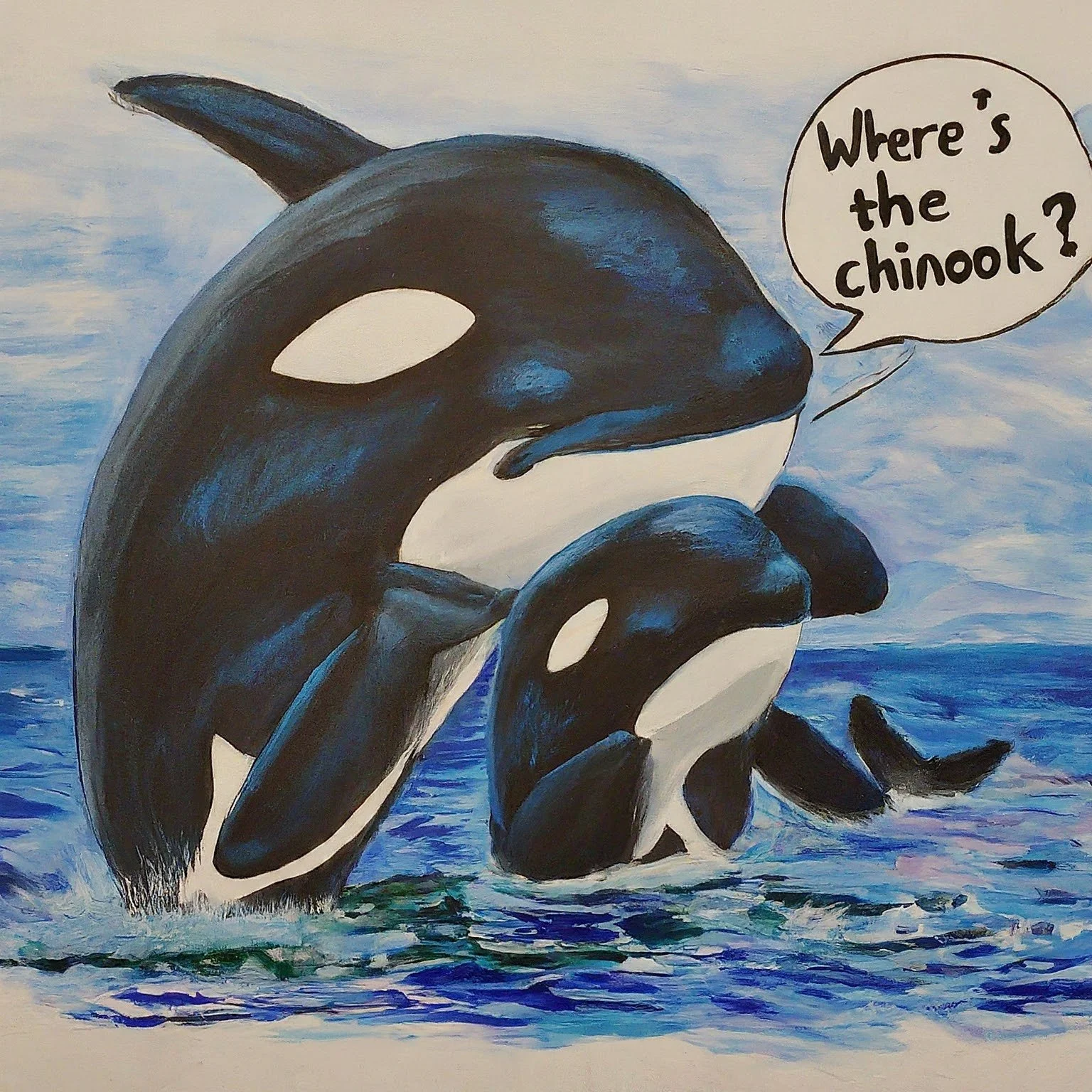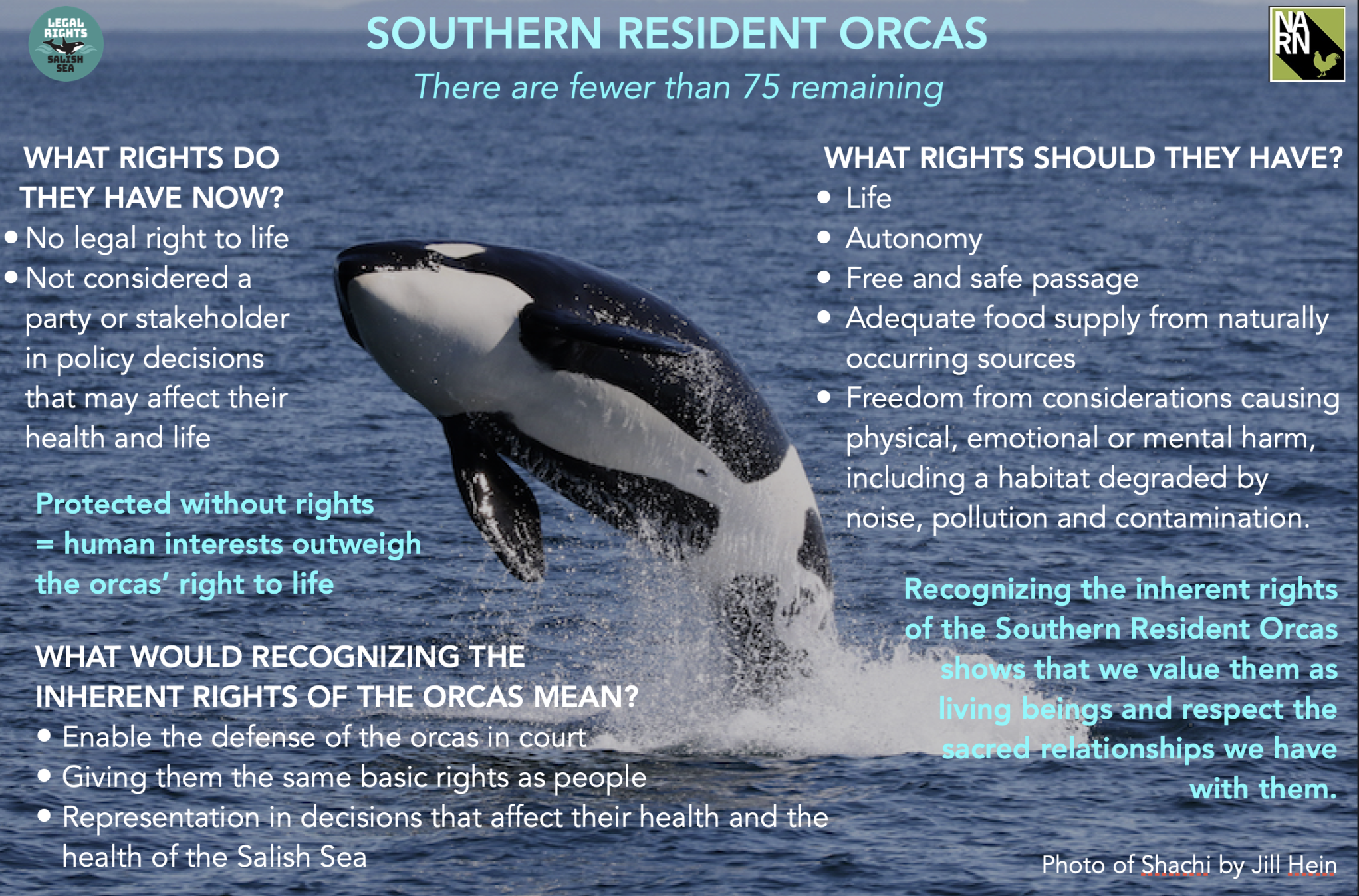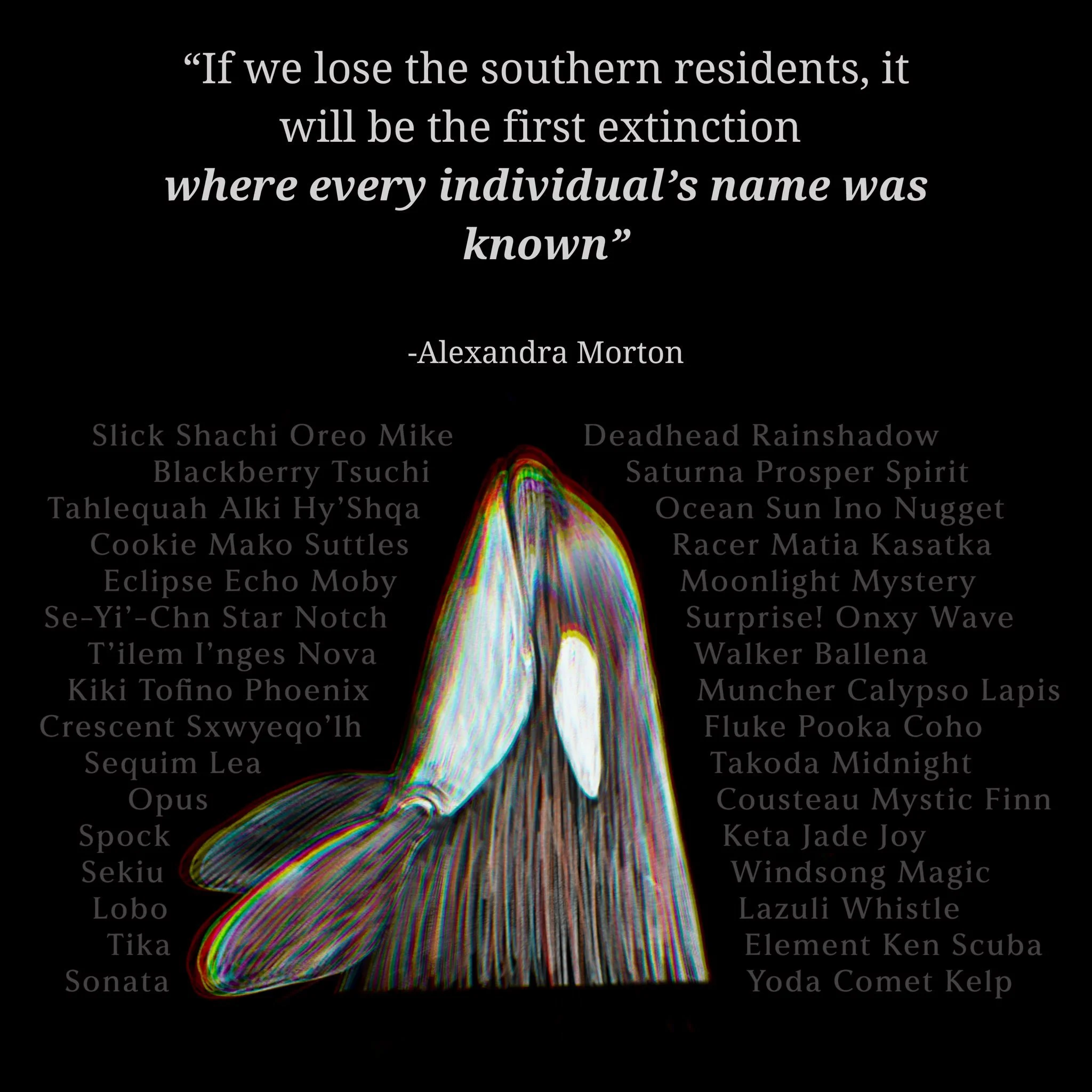Lower Snake River - Impact Area Special Groups
Participating stakeholders will discuss, update and finalize this section. The Group’s objective is to discuss solutions on how to restore the Snake River while also meeting the impact area needs and, most times, improving on what is thought to be possible today. To add your voice, to discuss your concerns and to collaborate on a mutual solution, please Join Us.
Marine Biologists & Orca Specialists - Call to Action
It’s no secret that the Southern Resident Orca are silently suffering on the brink of extinction.
We call on all Orca Experts and Scientists to address the challenges with the urgency required to protect these iconic marine mammals and restore the NW ecosystem for future generations.
Evaluate the impact of dam breaching on orca prey availability, focusing on how increased salmon runs from the Columbia and Snake Rivers can support year-round food supply for the orcas.
Acknowledge the critical role of spring Chinook salmon from the Columbia and Snake Rivers in sustaining orca populations through the lean winter months.
Advocate for immediate actions to increase water spill over the dams, creating more natural river conditions to boost salmon survival rates.
Recognize the inherent rights of the Southern Resident Orca.
Evaluate proposed timelines and solutions and their effects on orca health and reproduction.
By uniting our expertise, we can develop a comprehensive plan that supports both the recovery of Southern Resident Orca and the health of our ecosystems.
Challenges & Benefits - Orca
A subset of topics included as starter - additional to be added by workstream leads and collaborators
The Southern Resident Killer Whales Are Out of Time—Extinction Looms
There are only 74 Southern Resident Killer Whales (SRKWs or Southern Resident Orcas) alive today.
Serious injury or mortality of a single individual is likely to appreciably reduce the survival and recovery of the Southern Resident Killer Whales.
Every birth and death matters within an endangered population as small as the Southern Resident’s.
A primary threat to the orcas’ survival and reproduction is the lack of chinook salmon.
The Southern Residents have a 69% pregnancy failure rate. • When calves are born alive, only half of them survive to two years old.
Out of every 20 SRKW pregnancies, 14 die in utero. Only three calves survive more than two years.
Without improvement, this reproductive rate spells extinction.
The Southern Resident orcas continuing lack of sufficient prey and malnutrition makes the need for lower Snake River Dam breaching urgent and immediate.
Two Decades of SRKW Extinction Red Flags Have Been Ignored
In 2005 when 88 whales were alive, the SRKWs were listed as endangered under the ESA. Since their listing, the population has declined 15%.
Perhaps the single greatest change in food availability for resident killer whales since the late 1800s has been the decline of salmon from the Columbia River Basin.3
Historically, approximately half of the Columbia Basin salmon were produced by the lower Snake River and its tributaries.
Based on NOAA’s research, it appears likely that over half the chinook consumed by the Southern Residents are from the Columbia River Basin.
The Southern Residents are increasingly relying on Columbia/Snake chinook, with the decreasing availability of Puget Sound salmon.
In 2015 the SRKWs earned the dubious distinction of being named one of eight of NOAA’s “Species in the Spotlight.” The whales remain a species in the spotlight, which means that the whales are at high risk of extinction, that we know what to do to recover them, but that we have not taken the needed actions.
In 2022, the Washington Department of Fish and Wildlife issued emergency rulemaking due to the Southern Resident Killer Whale’s “high risk of extinction.”
A recent 2024 analysis by many of the nation’s foremost orca experts concludes that the threat with the greatest impact to SRKW population growth remains the availability of Chinook salmon.
The same analysis warns of an accelerating decline in these critically endangered killer whales.
“Despite all we know about [the Southern Resident orcas] and why they are declining, this beloved species is hurtling toward extinction in plain sight, . . . oblivion happening right before our eyes. . . . We have a generation or two where the population is not fluctuating around zero, it is fluctuating around a decline, then it accelerates to a faster rate of decline to extinction. . . This is what the status quo will do.”
Credit: Emma Luck
References and Further Reading
Washington Department of Fish & Wildlife, 6/30/22, Emergency Rulemaking,
Southern Resident orcas are listed as endangered under the federal Endangered Species Act, and are identified as a Species of Greatest Conservation Need under the State Wildlife Action Plan. “Reasons for this finding: The imminent risk to an endangered species requires additional protection immediately. This emergency action is necessary to protect the public’s interest in the preservation of a vulnerable endangered animal. [Emphasis added.]
Additional Topics & Resources
TBD by Subject Leaders and Experts
This section to be developed by the Leads in the Unification.
If you are a marine biologist and/or orca expert who would like to collaborate in restoring the Snake River please Join Us.
The Answers are Out There
We only need to ask HOW.





